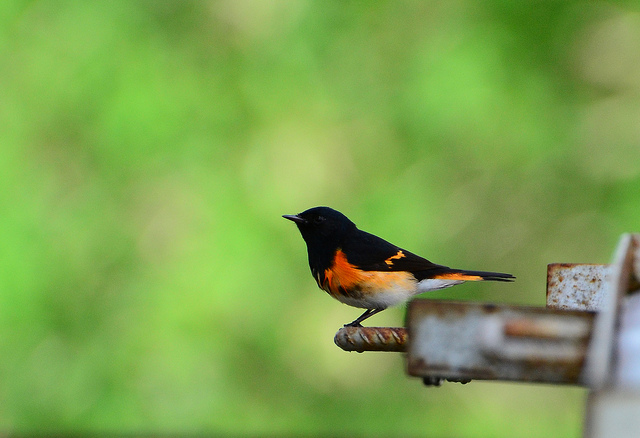
It's been estimated that up to one in ten species could go extinct by the end of this century as a result of climate change. Conservation professionals are working hard to understand how climate change will influence species and to develop strategies to manage the risks, but migratory species pose a particular challenge. These long-distance migrants spend parts of their annual cycle in different habitats, at different latitudes, and often cross geopolitical boundaries.
Migration is an adaptive response to geographic and seasonal variation in resources, but climate change may disrupt the longstanding, and sometimes impeccably timed, relationships between migratory species and their environment. Changes in ecological conditions may be taking place on both ends of a migratory route, making it difficult to predict how climate alterations will affect a species or affect it across its range.
Climate change vulnerability assessments are used to develop an understanding of species’ vulnerability to climate change and guide management efforts. These frameworks are becoming mainstream decision support tools for conservation in the US, but they may be doing migratory species a disservice, according to a commentary published this week in Nature Climate Change.
Current assessments fall short in predicting the vulnerability of migratory species to climate change, neglecting to look at the species’ migratory status or consider factors that impact the species outside of their breeding grounds. Climate change impacts in one phase of a species' annual cycle could carry over to the next, making it necessary to consider climate impacts across seasons and in various locations.
Many vertebrates in North America are migratory species, including 80 percent of birds. The American Redstart, for example, is a small migratory songbird that spends about two months nesting in the US and Canada, before wintering in Central and South America. The evidence is mounting that, for the Redstart and other species, climate in the wintering grounds can have a variety of effects on the other end of their range. These include an influence on the time that the species arrive at breeding grounds, their reproductive success, and their population dynamics.
By overlooking a significant portion of a species’ annual cycle, key aspects of their biology are overlooked, leading to climate-risk scenarios that are oversimplified. These shortcomings could fail to detect risk to species or population and mislead conservation efforts.
The authors note that although current efforts to assess species’ vulnerability to climate change are commendable, efforts must be taken to update the methods so that they better capture the full annual cycle for migratory species. “We fear that getting it wrong will have enormous costs—the foremost being missed opportunities to take conservation action at the right times and places for those species most likely to be vulnerable.”
Nature Climate Change, 2013. DOI: 10.1038/nclimate1810 (About DOIs).
Listing image by Thomas Cantwell
reader comments
32